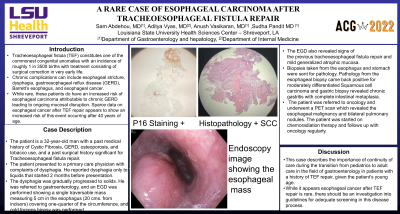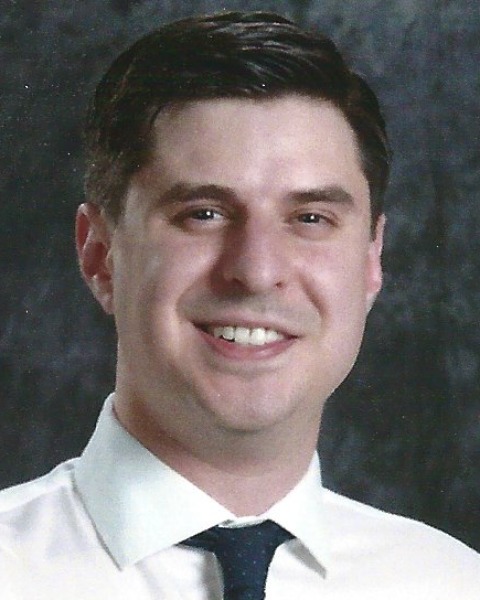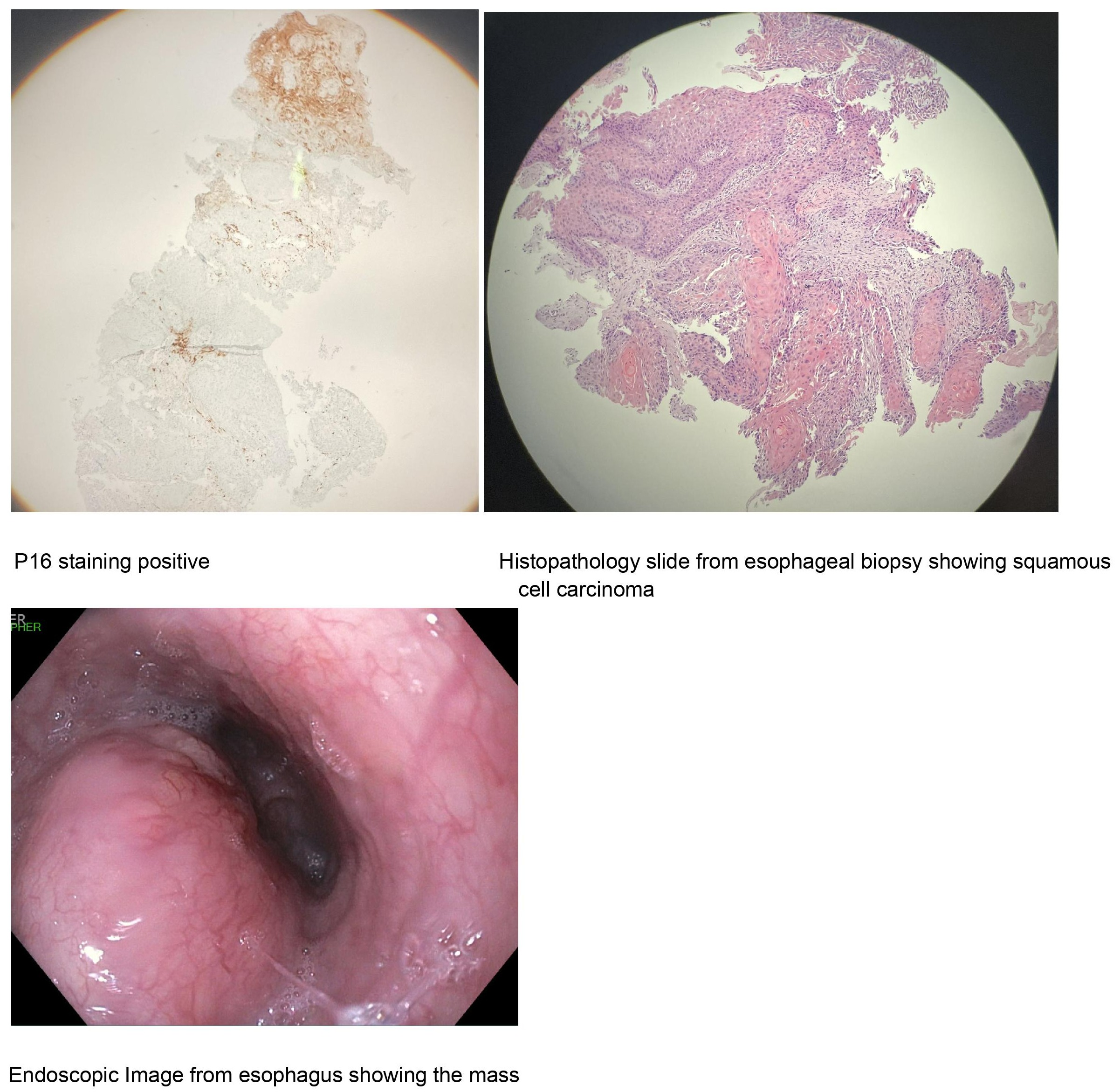Back


Poster Session C - Monday Afternoon
Category: Esophagus
C0235 - A Rare Case of Esophageal Carcinoma After Tracheoesophageal Fistula Repair
Monday, October 24, 2022
3:00 PM – 5:00 PM ET
Location: Crown Ballroom

Has Audio

Sam Abdehou, MD
Louisiana State University Health Sciences Center
Shreveport, Louisiana
Presenting Author(s)
Award: Presidential Poster Award
Sam Abdehou, MD1, Aditya Vyas, MD1, Anush Vasikaran, MD2, Sudha Pandit, MD3
1Louisiana State University Health Sciences Center, Shreveport, LA; 2Ochsner LSU Health Shreveport, Shreveport, LA; 3LSUHSC, Shreveport, LA
Introduction: Tracheoesophageal fistula (TEF) constitutes one of the commonest congenital anomalies with an incidence of roughly 1 in 3500 births with treatment consisting of surgical correction in very early life. Chronic complications can include esophageal stricture, dysphagia, gastroesophageal reflux disease (GERD), Barrett’s esophagus, and esophageal cancer. While rare, these patients do have an increased risk of esophageal carcinoma attributable to chronic GERD leading to ongoing mucosal disruption. Sparce data on esophageal cancer after TEF repair appears to show an increased risk of this event occurring after 40 years of age.
Case Description/Methods: The patient is a 32-year-old man with a past medical history of Cystic Fibrosis, GERD, osteoporosis, and tobacco use, and a past surgical history significant for Tracheoesophageal fistula repair. The patient presented to a primary care physician with complaints of dysphagia. He reported dysphagia only to liquids that started 2 months before presentation. The dysphagia was gradually progressed to solids. He was referred to gastroenterology, and an EGD was performed showing a single traversable mass measuring 5 cm in the esophagus (20 cms. from incisors) covering one-quarter of the circumference, and cold forceps biopsy was performed. The EGD also revealed signs of the previous tracheoesophageal fistula repair and mild generalized atrophic mucosa. Biopsies taken from the esophagus and stomach were sent for pathology. Pathology from the esophageal biopsy came back positive for moderately differentiated Squamous cell carcinoma and gastric biopsy revealed chronic gastritis with complete intestinal metaplasia. The patient was referred to oncology and underwent a PET scan which revealed the esophageal malignancy and bilateral pulmonary nodules. The patient was started on chemoradiation therapy and follows up with oncology regularly.
Discussion: This case describes the importance of continuity of care during the transition from pediatrics to adult care in the field of gastroenterology in patients with a history of TEF repair, given the patient’s young age. While it appears esophageal cancer after TEF repair is rare, there should be an investigation into guidelines for adequate screening in this disease process.

Disclosures:
Sam Abdehou, MD1, Aditya Vyas, MD1, Anush Vasikaran, MD2, Sudha Pandit, MD3. C0235 - A Rare Case of Esophageal Carcinoma After Tracheoesophageal Fistula Repair, ACG 2022 Annual Scientific Meeting Abstracts. Charlotte, NC: American College of Gastroenterology.
Sam Abdehou, MD1, Aditya Vyas, MD1, Anush Vasikaran, MD2, Sudha Pandit, MD3
1Louisiana State University Health Sciences Center, Shreveport, LA; 2Ochsner LSU Health Shreveport, Shreveport, LA; 3LSUHSC, Shreveport, LA
Introduction: Tracheoesophageal fistula (TEF) constitutes one of the commonest congenital anomalies with an incidence of roughly 1 in 3500 births with treatment consisting of surgical correction in very early life. Chronic complications can include esophageal stricture, dysphagia, gastroesophageal reflux disease (GERD), Barrett’s esophagus, and esophageal cancer. While rare, these patients do have an increased risk of esophageal carcinoma attributable to chronic GERD leading to ongoing mucosal disruption. Sparce data on esophageal cancer after TEF repair appears to show an increased risk of this event occurring after 40 years of age.
Case Description/Methods: The patient is a 32-year-old man with a past medical history of Cystic Fibrosis, GERD, osteoporosis, and tobacco use, and a past surgical history significant for Tracheoesophageal fistula repair. The patient presented to a primary care physician with complaints of dysphagia. He reported dysphagia only to liquids that started 2 months before presentation. The dysphagia was gradually progressed to solids. He was referred to gastroenterology, and an EGD was performed showing a single traversable mass measuring 5 cm in the esophagus (20 cms. from incisors) covering one-quarter of the circumference, and cold forceps biopsy was performed. The EGD also revealed signs of the previous tracheoesophageal fistula repair and mild generalized atrophic mucosa. Biopsies taken from the esophagus and stomach were sent for pathology. Pathology from the esophageal biopsy came back positive for moderately differentiated Squamous cell carcinoma and gastric biopsy revealed chronic gastritis with complete intestinal metaplasia. The patient was referred to oncology and underwent a PET scan which revealed the esophageal malignancy and bilateral pulmonary nodules. The patient was started on chemoradiation therapy and follows up with oncology regularly.
Discussion: This case describes the importance of continuity of care during the transition from pediatrics to adult care in the field of gastroenterology in patients with a history of TEF repair, given the patient’s young age. While it appears esophageal cancer after TEF repair is rare, there should be an investigation into guidelines for adequate screening in this disease process.

Figure: Histopathology and endoscopic images
Disclosures:
Sam Abdehou indicated no relevant financial relationships.
Aditya Vyas indicated no relevant financial relationships.
Anush Vasikaran indicated no relevant financial relationships.
Sudha Pandit indicated no relevant financial relationships.
Sam Abdehou, MD1, Aditya Vyas, MD1, Anush Vasikaran, MD2, Sudha Pandit, MD3. C0235 - A Rare Case of Esophageal Carcinoma After Tracheoesophageal Fistula Repair, ACG 2022 Annual Scientific Meeting Abstracts. Charlotte, NC: American College of Gastroenterology.

